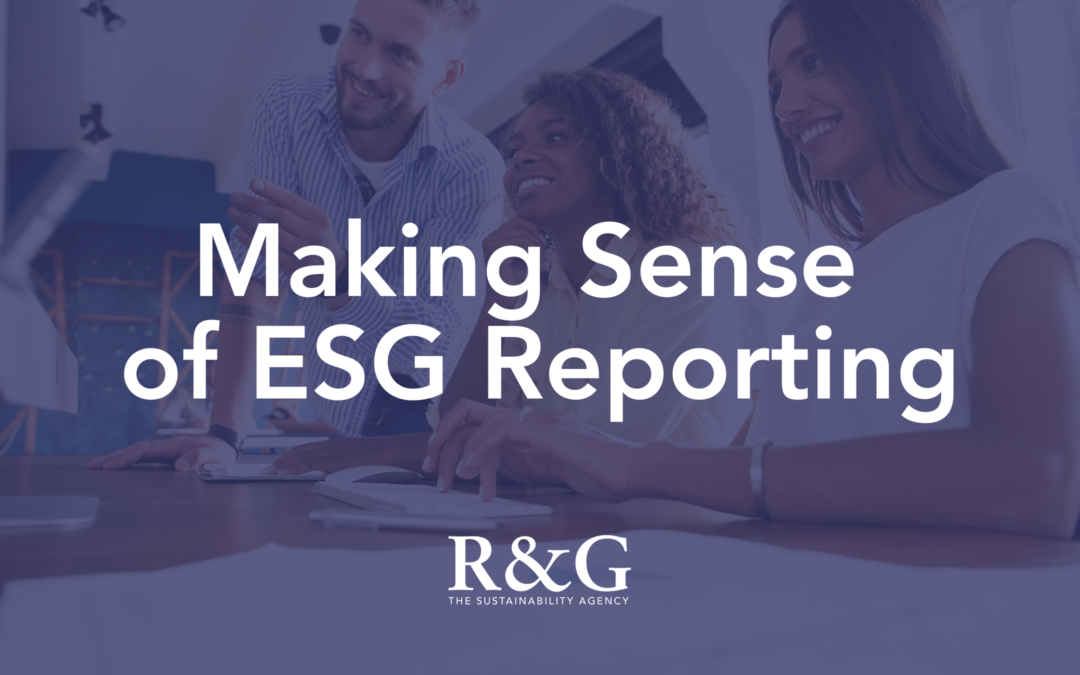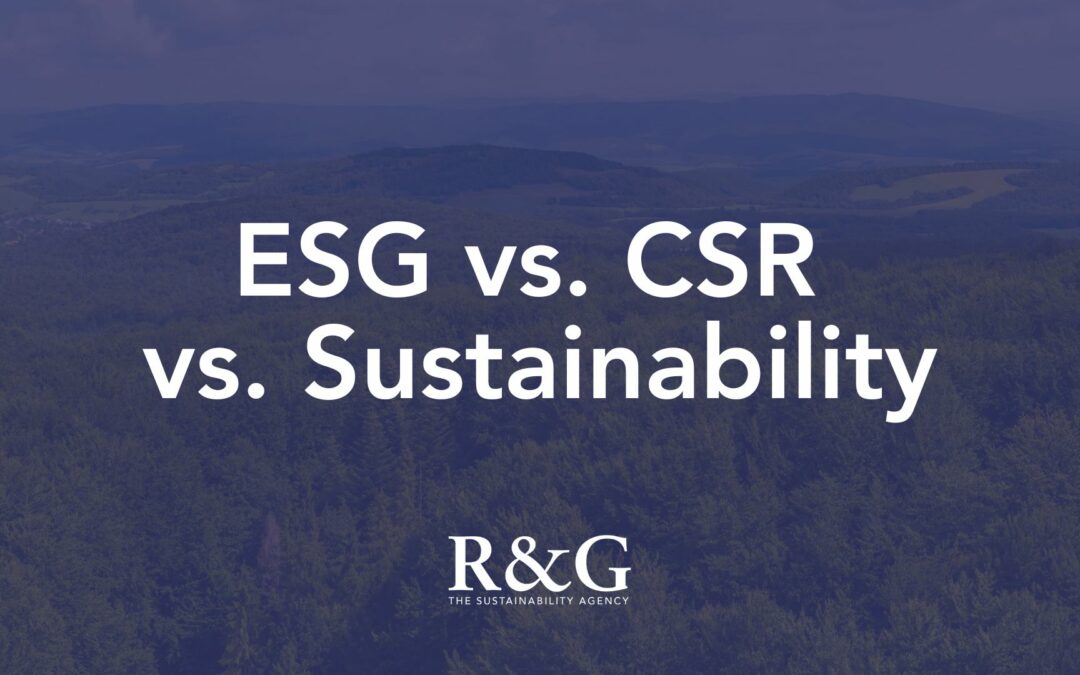We’ve decoded 9 types of greenwashing––here’s what you need to know
You’ve heard of greenwashing before–but did you know there are actually several different types of greenwashing?
It’s true–greenwashing is more than false claims about being environmentally friendly, and it’s not always intentional. As expectations grow for brands to communicate their impact to consumers, the pitfalls of greenwashing become harder to escape.
In the realm of Sustainability, authenticity goes hand in hand with effective messaging. Overselling your Sustainability efforts can erode trust in your brand and undermine your genuine impact.
The last thing you want is to mislead your stakeholders by unintentionally using any of these types of greenwashing in your communications.
So, how can you authentically communicate your Sustainability achievements and avoid greenwashing?
A great starting point is understanding the landscape of greenwashing—what it entails and what it can look like. In this post, we’ll dive into nine distinct types of greenwashing and arm you with the tools and knowledge to navigate the complexities of communicating Sustainability.
By gaining a comprehensive understanding of these pitfalls, you’ll be empowered to effectively showcase your genuine efforts and build trust with your audience.

1. Best in Class
When a company confidently claims they’re the unparalleled champion of Sustainability in its industry, but there’s no substantial foundation or external validation to back up those claims, that’s called “Best in Class” greenwashing.
With so many factors at play, measuring Sustainability is undeniably challenging, which means claiming to be the absolute best at it would be difficult to prove.
Now, think about it from a consumer’s point of view. Consumers try to make responsible choices and support environmentally conscious companies. But by making unsupported claims about your ESG practices, you’re not only misleading them, but you’re also undermining real efforts to promote Sustainability. This makes it harder for people to make informed decisions about the products they buy.
We understand that you might be working hard to show off your Sustainability wins, but you have to strike a balance.
To avoid this type of greenwashing, look out for phrases like this when you’re working on your Sustainability communications:
- “The best natural products……”
- “Leaders in sustainability…”
- “Greenest products around…
- “Best eco-friendly products…”
- “Number one in sustainability…”
- “Best use of resources…”

2. SDG Bingo
When you first encounter the United Nations Sustainable Development Goals (SDGs)–a set of 17 goals for achieving sustainable development by addressing various social, economic, and environmental challenges facing the world–you might feel an immediate sense of excitement.
This is a great step, and feeling aligned with the SDGs might mean you want to help create a more sustainable and equitable future for all, but when companies begin incorporating the colourful SDGs into their marketing materials without a thoughtful plan, we call that “SDG Bingo.”
As a business owner, it’s important to move beyond simply feeling aligned with the SDGs and develop a comprehensive strategy that showcases your genuine commitment to Sustainability altogether.
So, how can you ensure that your alignment with the SDGs goes beyond mere symbolism and effectively translates into tangible impact? The key lies in developing a formalized plan and transparently showcasing your progress. This approach not only helps you avoid greenwashing but also demonstrates your company’s sincere dedication to the SDGs.
But how can you tell if you’re communicating your SDG initiatives clearly?
- Publish Environmental, Social and Governance (ESG) reports: These reports usually give comprehensive information on a company’s ESG performance and how they are contributing to the SDGs.
- Don’t try to tick every SDG box just for the sake of hitting every goal. It’s ok if what your company does doesn’t really relate to ending hunger, for example. What’s more important than communicating your contributions to sustainable development is making those contributions meaningful.
- Make public statements and reports available: Many companies publicly declare their commitment to the SDGs and provide updates on their progress toward achieving them. Ensure you’re providing specific details on how you’re addressing each SDG you’ve selected and what actions you’re taking to align with them.

3. Fluffy Language
Let’s address the use of ‘fluffy language’ or words and terms that lack clear meaning.
When a company says something like, “We’re dedicated to making a positive difference in the world through eco-friendly practices,” it’s not totally clear what this means.
While it may seem enticing to use terms like “eco-friendly,” “sustainable,” or “community-focused” in today’s consumer landscape, it can easily become another tactic of greenwashing without specific details or measurable goals.
It’s important to exercise caution and not rely solely on buzzwords, like ‘biodegradable,’ to describe the impact of products.
Why? Because there’s almost always more to it. Even if a product technically decomposes over time, it doesn’t necessarily mean it benefits the environment. The decomposition process may still harm ecosystems, and it may take a long time to decompose completely.
To avoid falling into this trap, it’s crucial to steer clear of using catchy phrases merely for the sake of it. Instead, focus your efforts on providing concrete evidence of your company’s commitment to Sustainability. This can include certifications, audits, or reports that substantiate your claims.

4. No Proof
This is what happens when a company uses claims that really sound good but lack substantial evidence to back them up.
It’s true that any company can say they’re “sustainable” or “eco-friendly,” and while some may genuinely be, these words alone hold little meaning without additional context and real evidence to support them.
Unfortunately, many companies use this tactic of making unproven claims to appear environmentally responsible without actually being environmentally responsible.
As a business owner, marketer, or Sustainability leader, it’s important to provide clear and specific evidence to substantiate your environmental claims.
This can include data showcasing your efforts in emissions reduction or obtaining reputable third-party certifications. By doing so, you move beyond empty words and build trust with your customers while promoting genuine Sustainability initiatives.

5. Gobbledygook
When companies make Sustainability claims that are technically true but express them using language that only scientists or field experts can understand, we call it gobbledygook. It’s a term that lacks clarity and causes confusion.
This situation can be particularly challenging for consumers to navigate because it’s difficult to discern what is genuinely meaningful or relevant to a product or industry.
That’s why it’s important to make sure you don’t leave your customers fooled by using big words and jargon that most people wouldn’t understand.
Remember, Sustainability should be accessible to everyone, not just scientists and experts!

6. Imaginary Friends
Ever heard of a company creating fake labels that resemble genuine third-party endorsements? Yep, it happens.
We all recognize the significance of certifications and endorsements in making informed decisions. Unfortunately, some companies take advantage of this trust by fabricating their own labels, logos and seals that mimic legitimate certifications, but hold no real credibility.
This deceptive tactic can be particularly challenging for consumers to identify.
As a business owner, it’s essential to maintain the trust of your customers by avoiding the use of fake endorsements.
Instead, focus on utilizing legitimate third-party certifications and labels that are widely recognized and trusted within your industry. By adhering to their criteria, you not only avoid this type of greenwashing, but you also demonstrate your commitment to transparency and genuine Sustainability practices.

7. Just Not Credible
Here’s another greenwashing tactic that’s all too common: making unbelievable claims about a product’s Sustainability.
You may have seen a tobacco company trying to market its cigarettes as eco-friendly with a few green touches added to its packaging or branding.
This type of greenwashing is particularly dangerous because it promotes harmful products under the guise of environmental responsibility. Basically, it’s like trying to make a junk food diet seem healthy by sprinkling some spinach on top.
Remember, genuine Sustainability requires substance, not mere appearances.

8. Lesser of Two Evils
Known as an incredibly sneaky tactic, the”lesser of two evils” is when companies try to convince consumers that their products or practices are environmentally friendly simply because they are better than even worse alternatives.
This might look like, “Hey, we’re not perfect, but at least we’re better than the other options out there, so cut us some slack!” For example, a car manufacturer might claim that their SUVs are “eco-friendly” because they produce fewer emissions than traditional gas-guzzlers. While this claim may hold some truth, it doesn’t change the fact that SUVs still contribute a lot to air pollution and carbon emissions.
To avoid this type of greenwashing in your communications, it’s important to focus on taking meaningful steps to actually reduce your environmental impact.
Communicate these efforts transparently to your customers by setting specific goals, providing verifiable data, and demonstrating a commitment to continuous improvement.

9. Out-Right Lying
Out of all types of greenwashing, outright lying––or using totally fabricated claims or data when talking about ESG and Sustainability practices––is what we’d consider the most harmful.
Unfortunately, this deceptive practice occurs all too frequently when companies seek to ride the Sustainability wave without actually putting in the necessary work.
It’s important to remember that consumers are discerning and can distinguish between genuine and false claims, so it’s always best to steer clear of false claims about your ESG or Sustainability practices merely for short-term gains. Trust us when we say it’s not worth it.
Instead, direct your focus toward making real, tangible improvements in your business practices.
Be transparent about your journey towards a more Sustainable future. By demonstrating your commitment to genuinely bettering the planet, you will earn the appreciation of your customers.
Where to Go From Here?
Effectively communicating your ESG initiatives is essential for building consumer trust and genuinely promoting Sustainability in the business world. To set your brand up for success, always keep these top five strategies in mind:
- Set crystal-clear ESG goals: Define specific, measurable targets and be transparent about your progress.
- Pursue third-party certifications: Seek external validation and welcome objective evaluations to bolster your Sustainability claims.
- Communicate with consistency: Make sure your brand’s messaging is aligned across all platforms and that your Sustainability story rings true.
- Put action before promotion: Prioritize making a real impact through your Sustainability initiatives rather than focusing solely on marketing your responsible image.
- Cultivate a culture of continuous improvement: Embrace the ongoing journey of refining your Sustainability strategy and learning from your triumphs and challenges.
By following these guidelines, your brand demonstrates a genuine commitment to environmental, social, and governance responsibilities—and of course, avoid greenwashing altogether. You’ll build trust and loyalty among your customers and stakeholders, paving the way for lasting success in the ever-growing conscious marketplace.
Ready to enhance your brand’s ESG strategy and make a positive impact? Let’s chat!
Schedule a free call with one of our ESG experts, and together, we’ll embark on a journey toward a more Sustainable and responsible future for your business.



